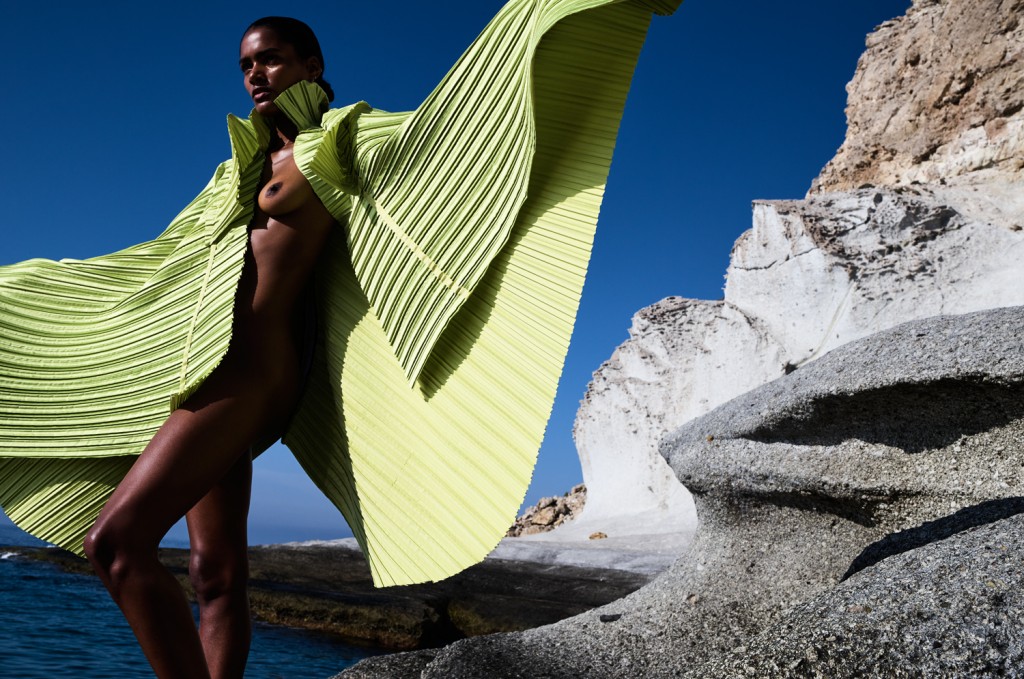
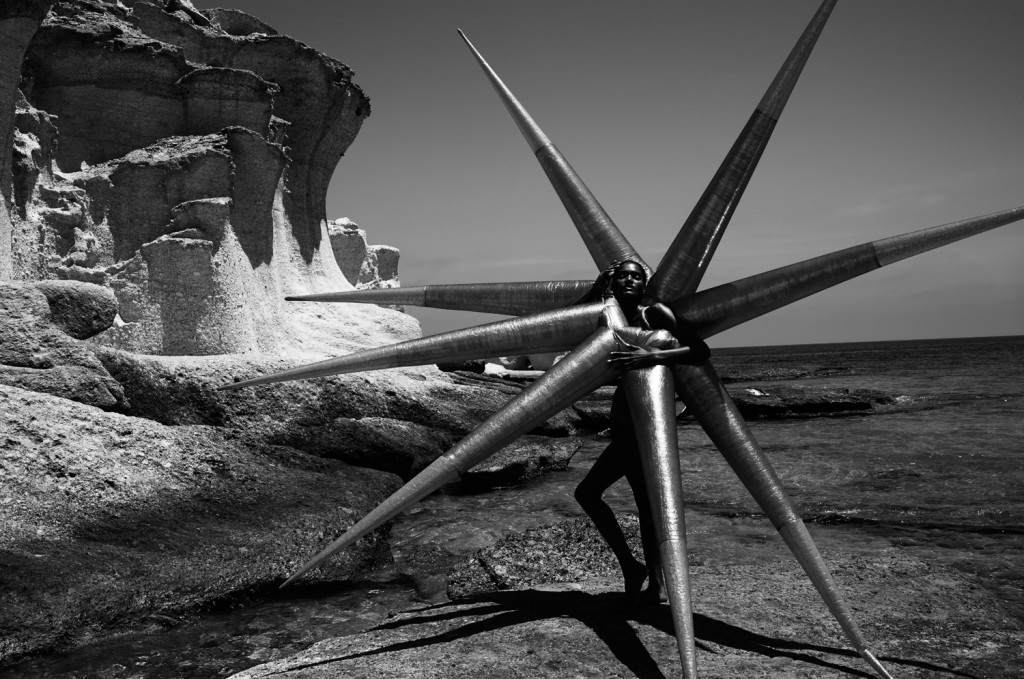
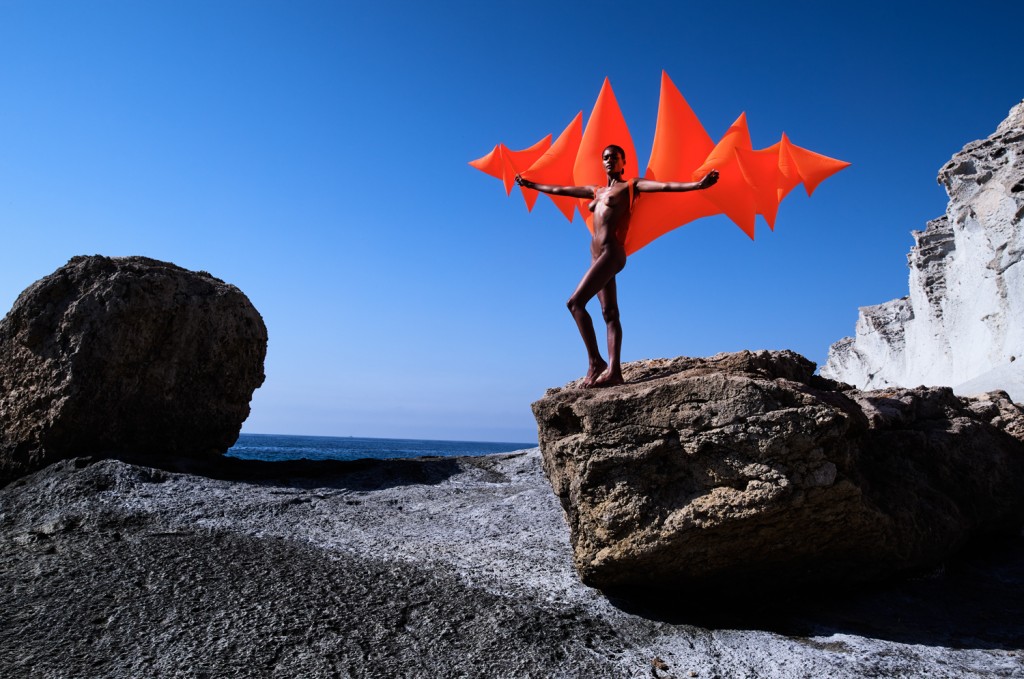
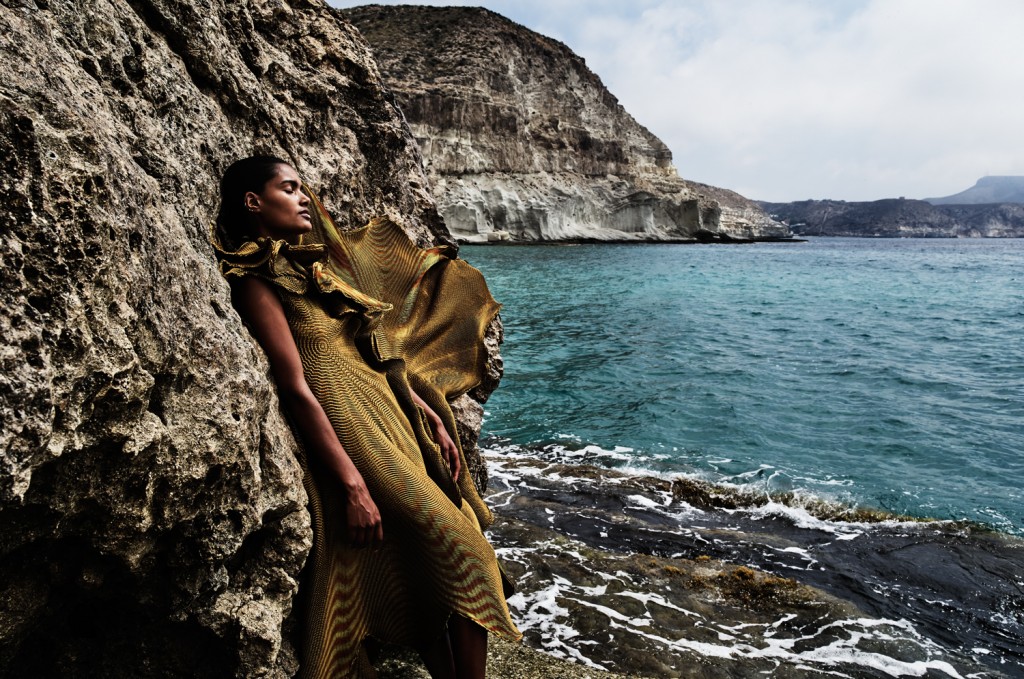
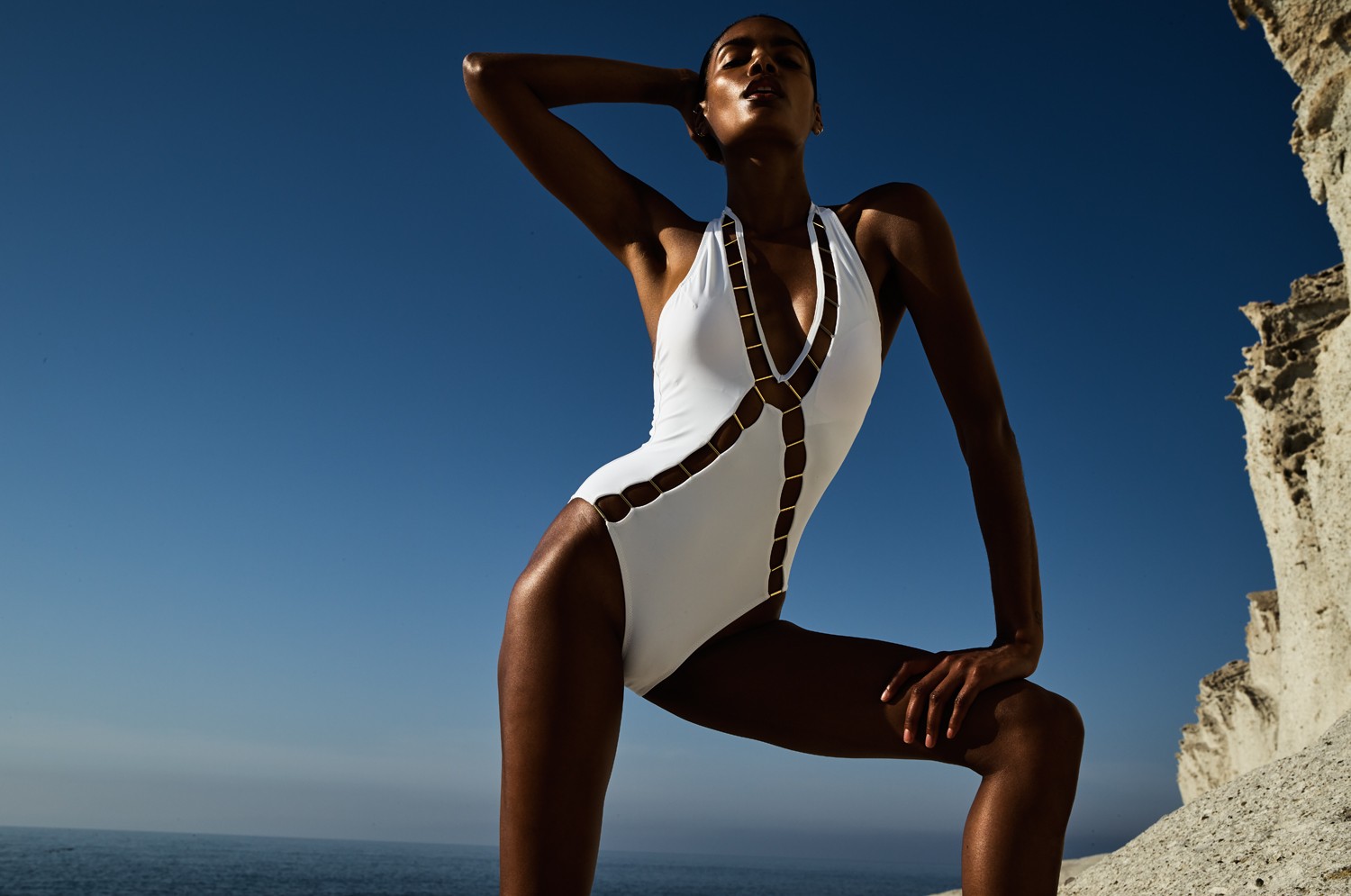
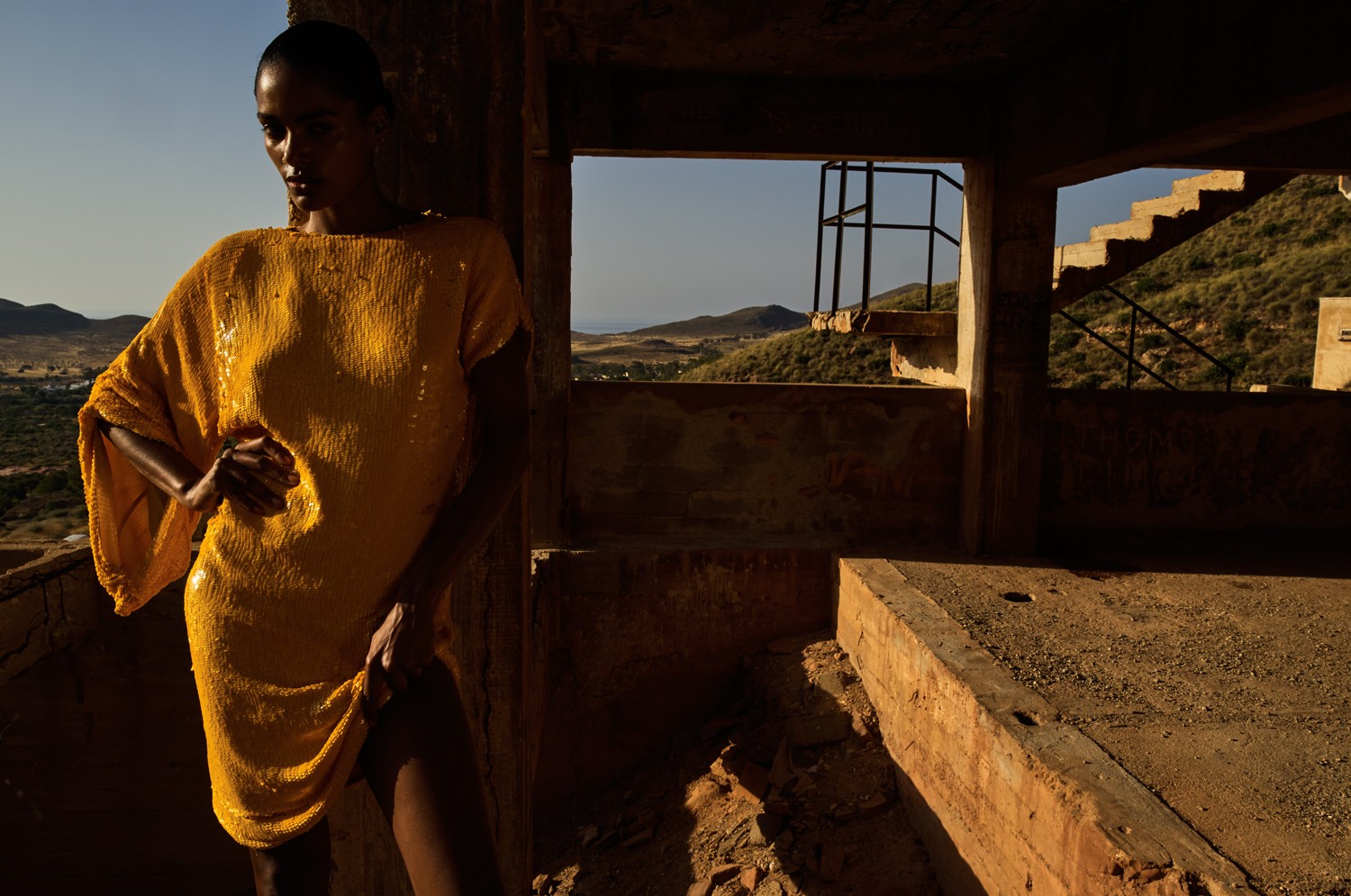
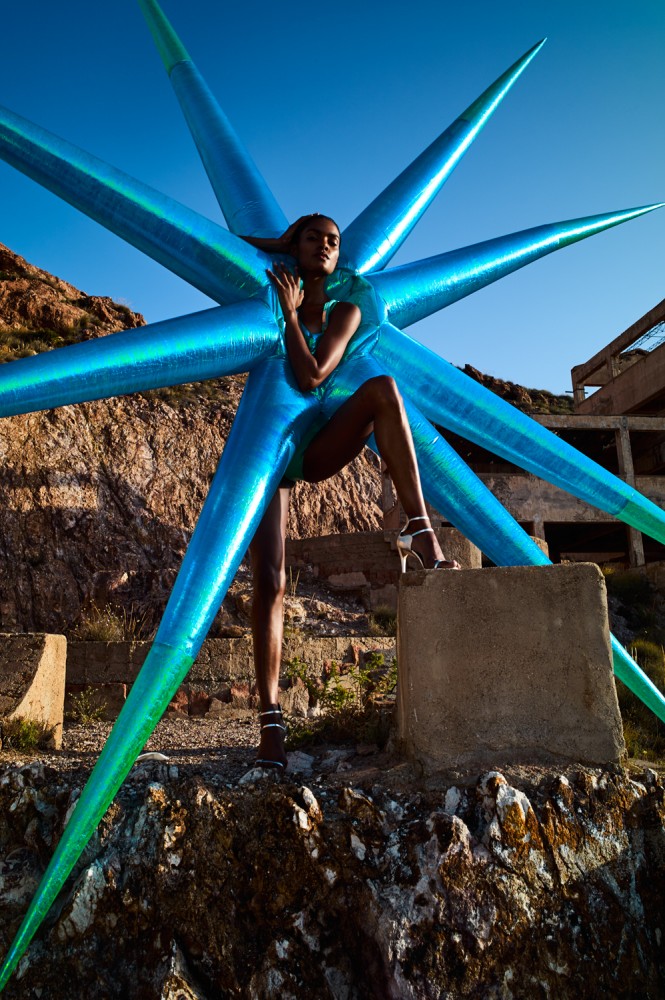
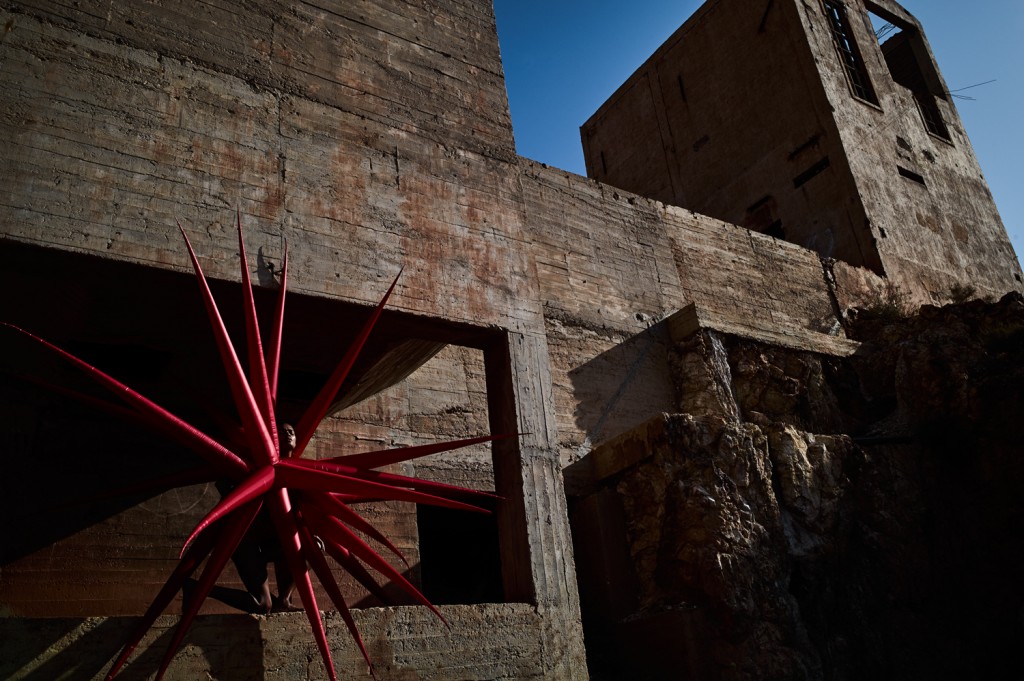
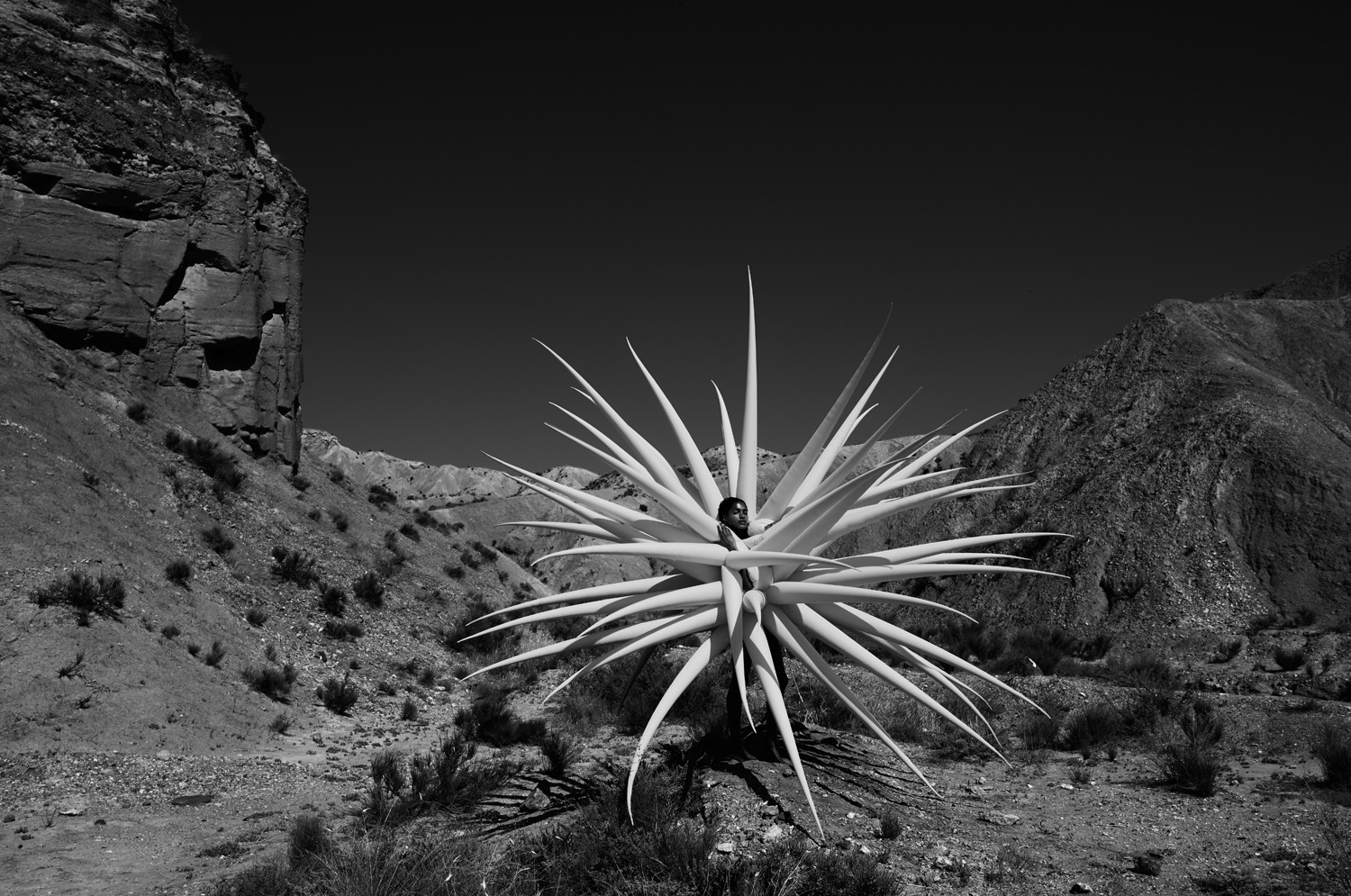
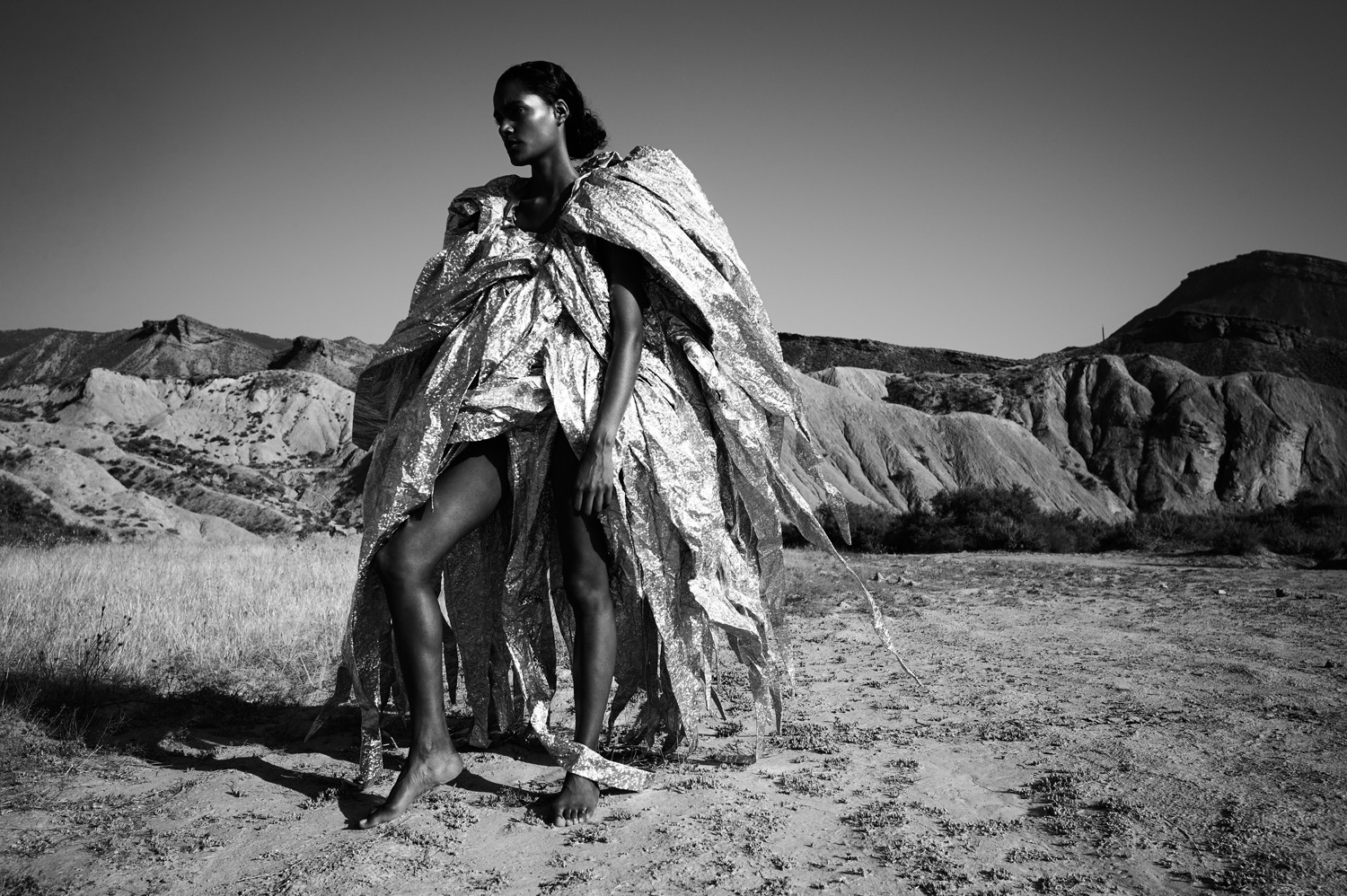
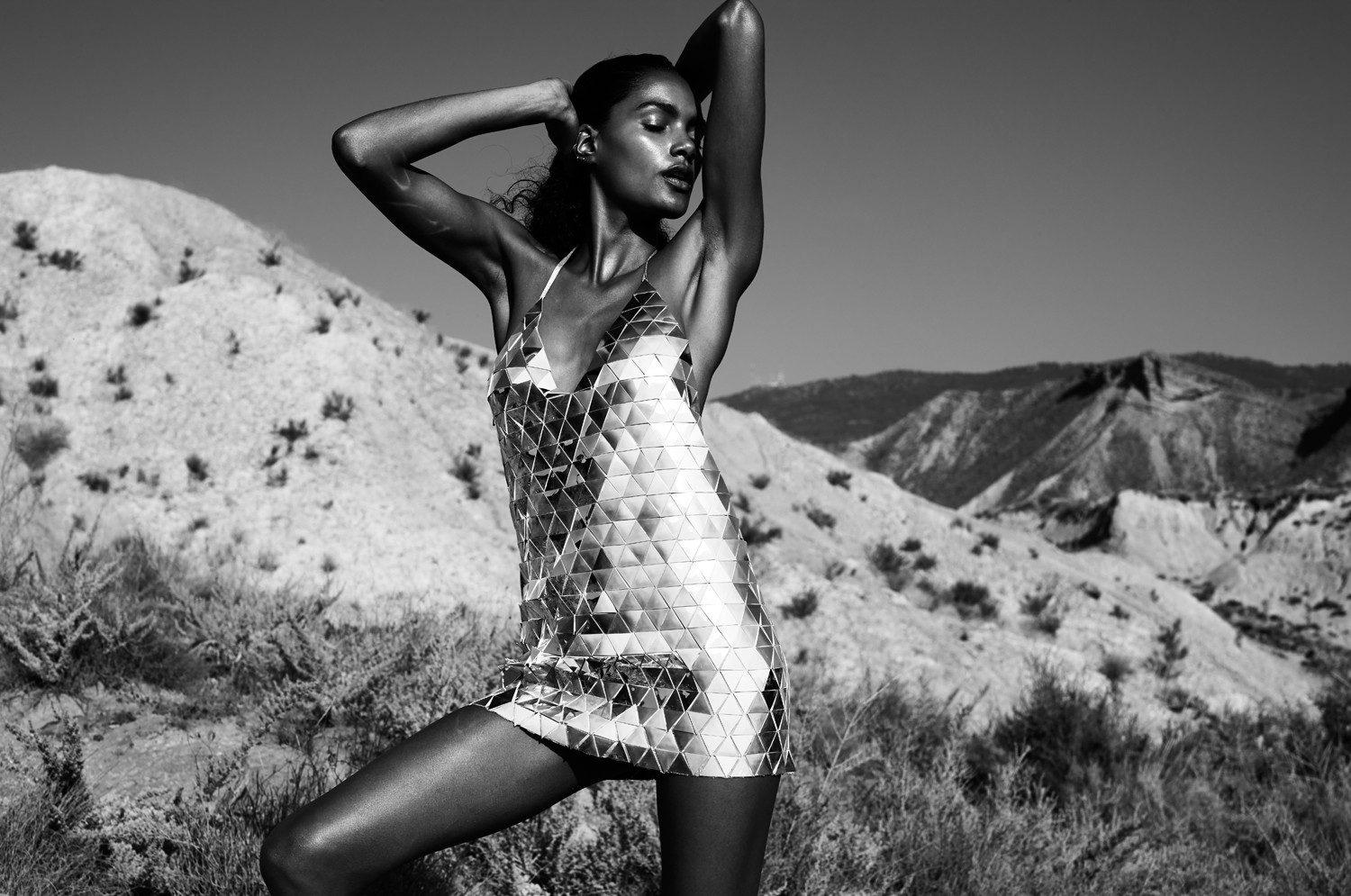
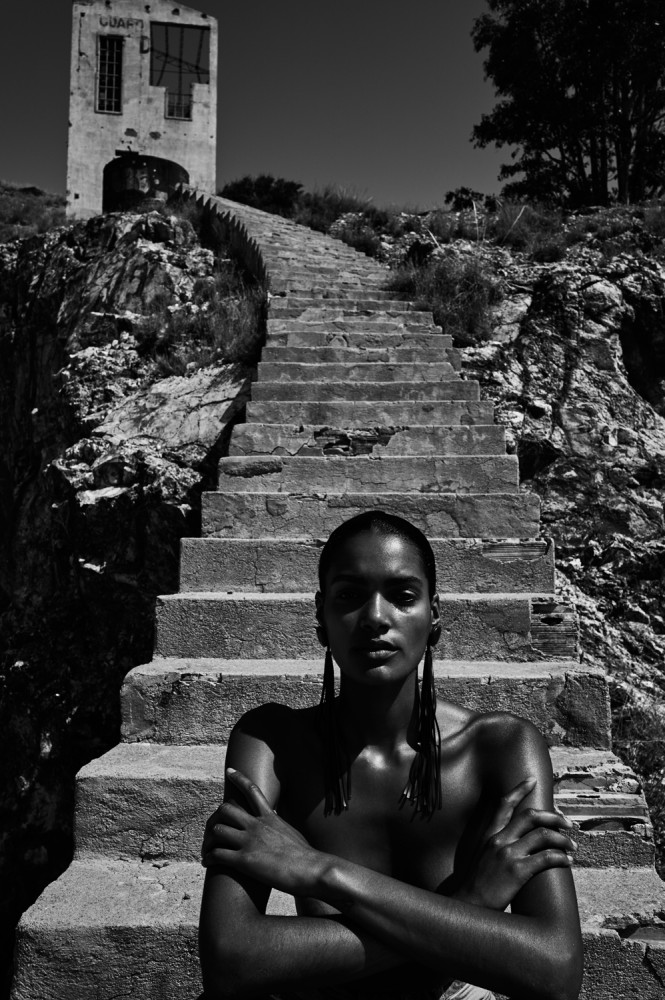
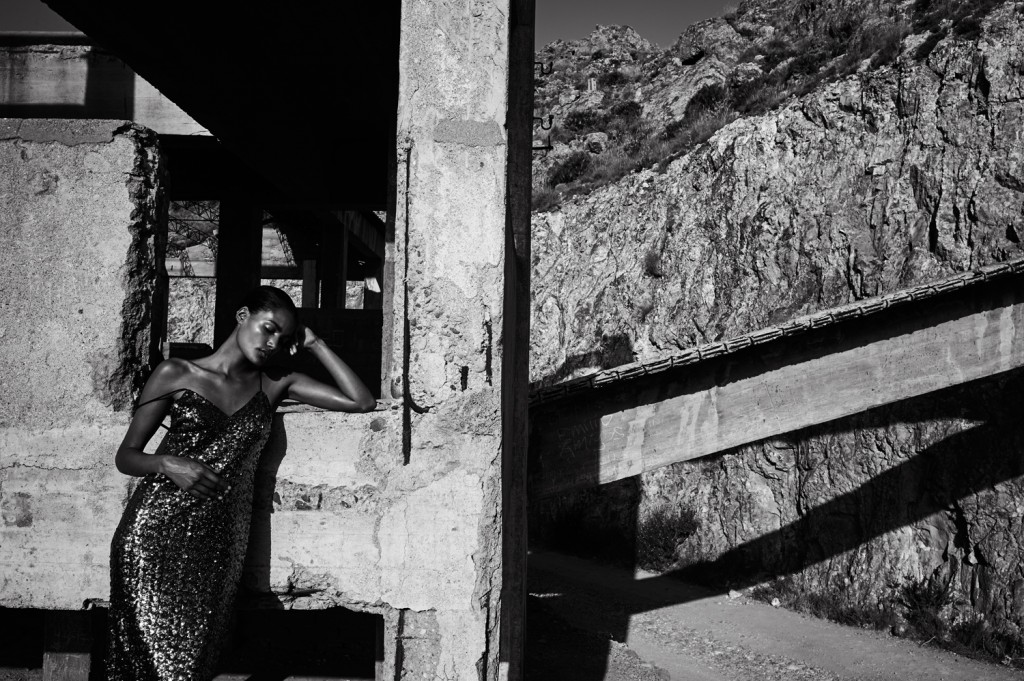
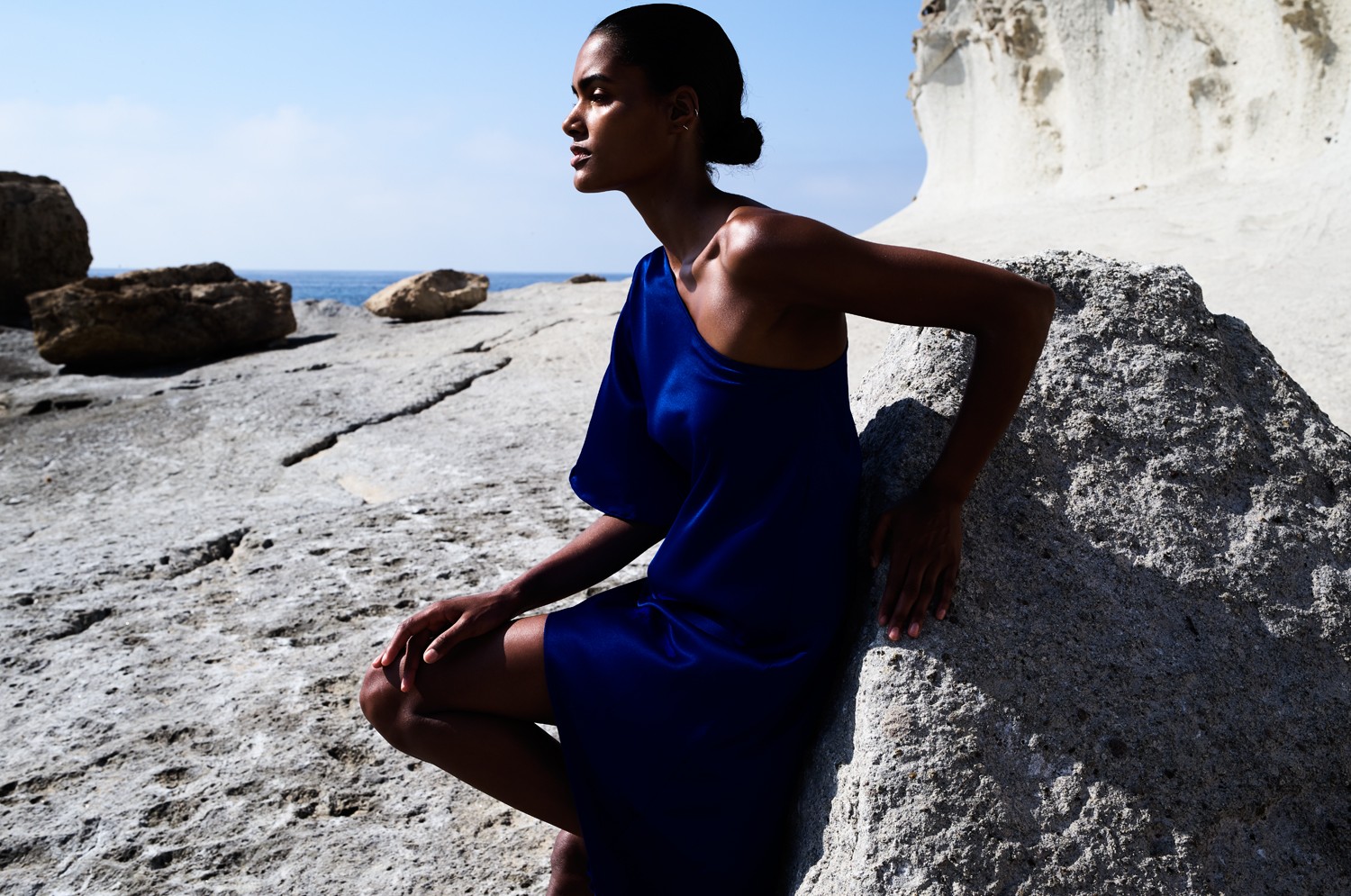
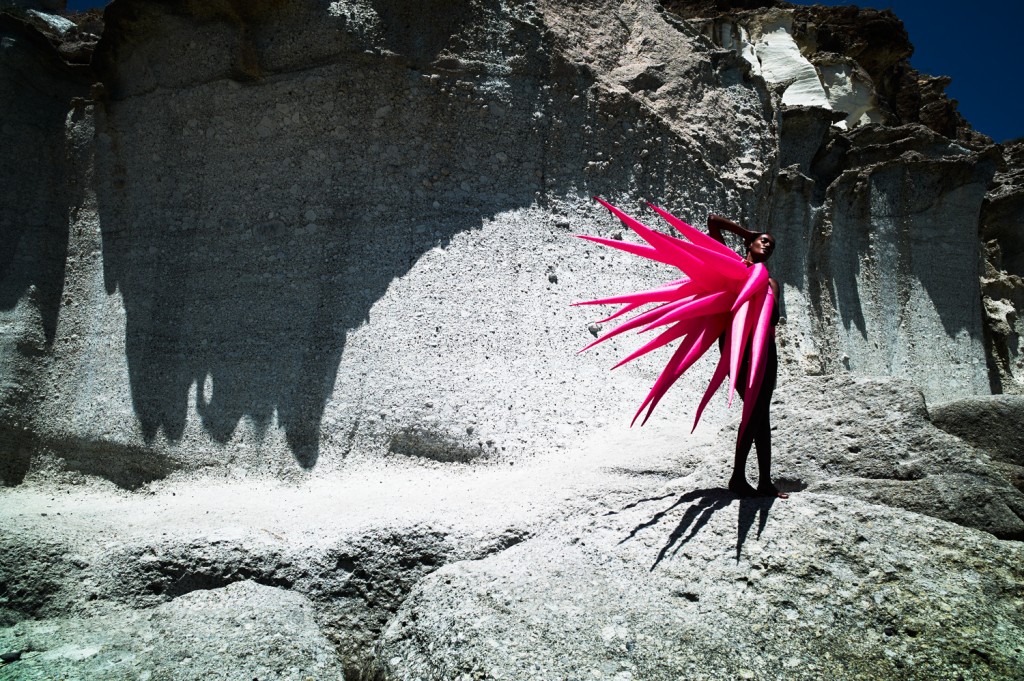
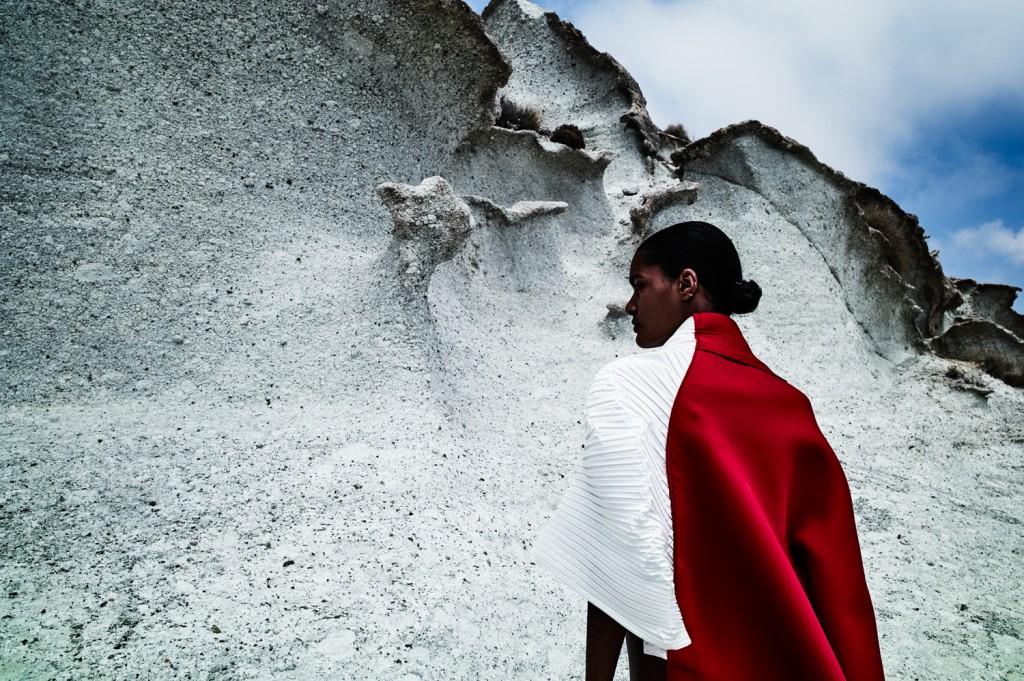
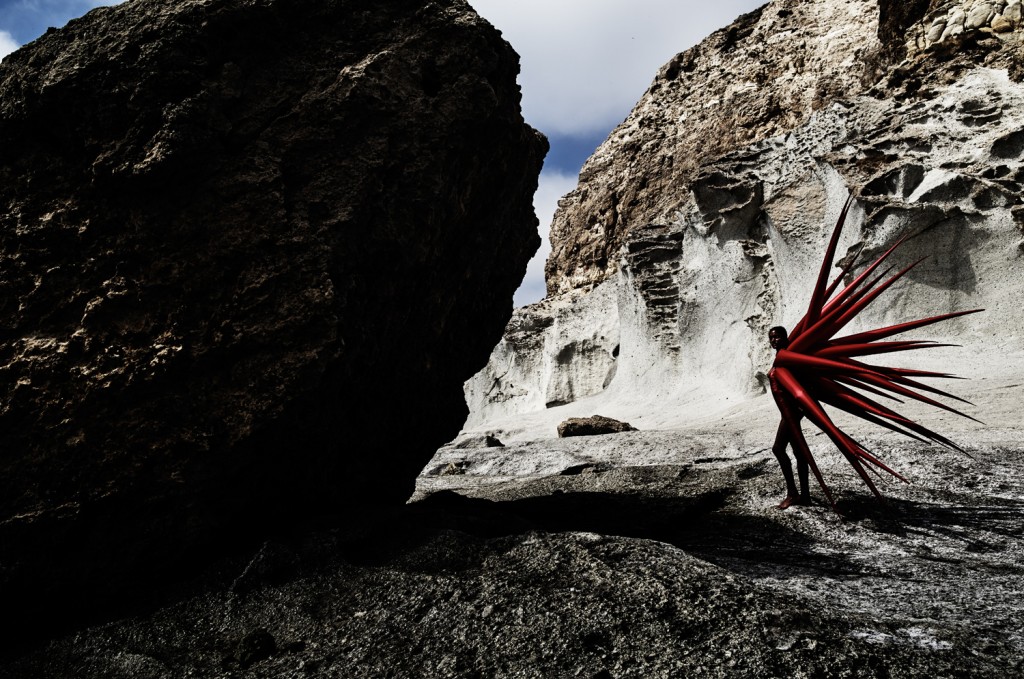
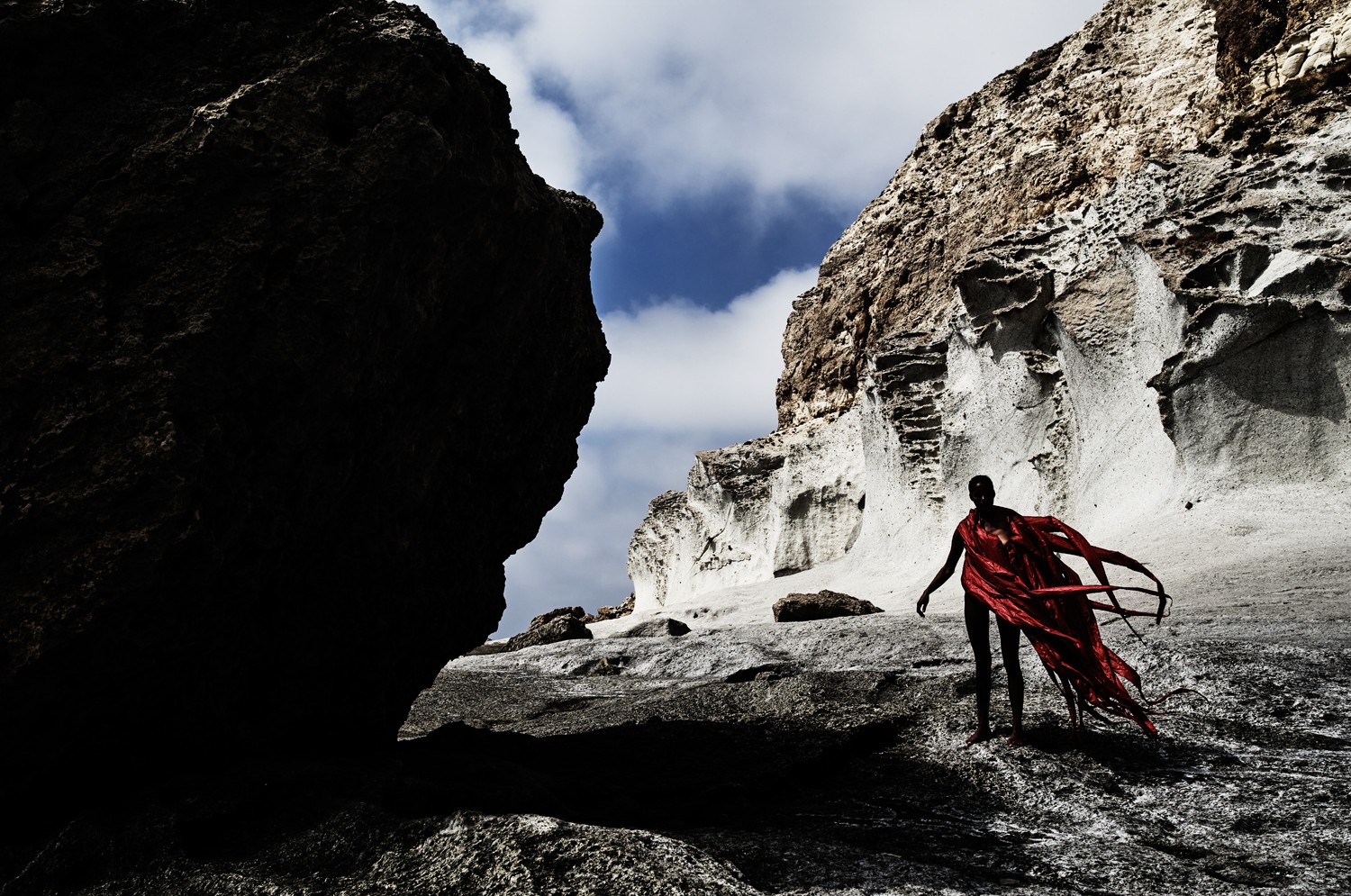


















INTERVIEW
Ram Shergill
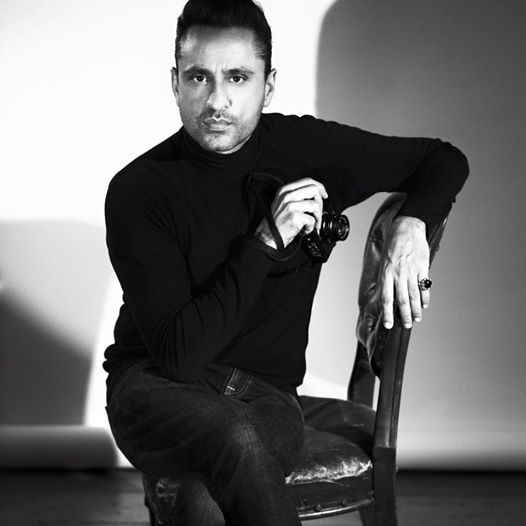
PHOTOGRAPHY Ram Shergill STYLING Claudia Behnke CREATIVE DIRECTION & PRODUCTION Daen Palma Huse HAIR & MAKEUP Oscar Alexander using JOICO for hair and Burberry for makeup DIGITAL & ASSISTING Peter Ashenhurst FILMING Dylan Borowski DESIGNER on SET Jack Irving MODEL Nadia Araujo @ Select Model Management London CAMERA Leica S (Typ 007) with Summarit-S 35mm f/2.5 (CS), Elmarit-S 45mm f/2.8 (CS), Summarit-S 70mm f/2.5 (CS), additional Leica M9
The landscape of southern Spain served as a backdrop for Ram Shergill’s ‘Goldmine’, capturing exalted, anthropomorphic-zoomorphic impressions in exuberant designs by Jack Irving.
What or who defined your path to and through fashion photography?
When I was a student I met Richard Avedon in London at the National Portrait Gallery and we had a brief conversation. I found him very inspiring as a person and it was nice that he took time to have a conversation with me. He had piercing eyes, and when we made eye contact it was as if his eyes went right through to my soul; almost as if they were talking to me or getting to know my persona. I really felt a certain warmth with him.
During the same period, while at university, I had a project about millinery, so I contacted milliner Philip Treacy. Through Philip I also met Isabella Blow and Alexander McQueen: all three of them inspired my photography and vision. Alexander McQueen initially mentored me on style and aesthetics. Lee, as he preferred to be called, told me he was into the “macabre” and the art photographer Joel Peter Witkin. This led me to research the “macabre” and the aesthetics of the dark side. I felt that Isabella, Alexander McQueen and Philip were all unorthodox in their thinking and had very interesting visions of the world. They lived in a world where art and fashion lived simultaneously and the boundaries between them were blurred. For me, Isabella was a living piece of art, and she inspired me in every sense. When I was in her presence, it felt like I was spending time with an icon such as Marlene Dietrich: she had this elegance that resonated beyond time and she was like a butterfly and a moth at the same time.
You went to Southern Spain to produce the ‘Goldmine’ idea you had for S magazine. Why did you choose that location?
I wanted to explore southern Spain’s film location history, as it was prominently used as a backdrop for films in the 1970s, especially spaghetti westerns such as ‘The Good, The Bad and The Ugly’, which starred Clint Eastwood in his prime. This was all research resulting from my editor and creative collaborator, Daen Palma Huse, suggesting Almeria as an interesting location as well as the surroundings of Rodalquilar, an old mining village. I immediately loved the light in Almeria, and the fact that the canyons are similar to those you find in an American western.
In the past I loved shooting in the Badlands of New Mexico, and Almeria had a similar feel. I believe Europe has a lot to offer in terms of location and light.
You opted for a very unusual styling. What is so special about it?
I chose to work with designer Jack Irving who designs for talents such as Lady Gaga. I find his work very interesting and I love the way it morphs with the human form.
It becomes like an exoskeleton for one’s body. I am currently researching anthropomorphism and zoomorphism. I like the way Jack’s creations become like human sea urchins.
What is your story about?
The story in the ‘Goldmine’, series of images is about the search for the inner gold within each of us, that special richness that we not only have on the outside through the fashion that we wear, but that is innate to our persona. It was also about the metaphorical symbolism of our exterior.
Can you live out your ideas when working on commercial assignments, or rather when you realise your own projects?
It’s quite difficult to live out your own ideas when working on commercial assignments. You can, however, adapt an idea or a concept. Sometimes, if you’re really lucky, you get a ‘carte-blanche’ assignment where the client lets you do whatever you want. It is definitely possible. I’ve been lucky to have this opportunity with certain clients and the results are a testament to this.
Do your own projects have an influence of what your clients want from you?
Generally, my own projects do not really have an influence on what clients want from me. I feel that sometimes my personal work is driven by full creative expression, which allows me to do the more creative work, which transcends fashion and moves into more of an artistic realm. Having said that, certain publications and advertising clients sometimes want me to be creative in that context, and allow me the freedom to explore the images that I really want to create. For example, sometimes working for Vogue or magazines such as Wonderland, there are different aesthetics and both would prefer slightly different images from each other, which is also dependent on who the current editor is at the time. Working on my own magazine, The Protagonist, allows me to photograph exactly how I like to, in collaboration with my amazing team. Also, working on this spread for S Magazine allowed me full creative freedom, so it was very pleasurable.
You work a lot with a Leica M. Where do you see the differences to the S and the SL?
Personally, I LOVE all three cameras: each has its own unique characteristics. I mainly use the M9, which I find superb, and am now using the M10: both are compact and very simple to use. The sheer amount of lenses, both old and new, have made this system invaluable, as each lens is like a “unique eye”, giving the perspective and view of how you perceive an image. This is a quality unique to all Leica cameras.
The S system is heavier and more like a bulky, older brother to the M. What’s great about this camera is that the sensor is much bigger, so it gives you room to crop images without losing quality; and this camera does have its benefits for large-scale, blowups. I would say that, from an advertising perspective, the S is a very good tool, as more often than not certain clients like to manipulate the image to get the picture they require. For instance, they may just want to crop into the head of the image; then they can create many pictures within a picture.
The SL is almost between the M10 and the S: it’s very fast and allows you to shoot at very fast speeds; and it’s also incredible for filming. On this shoot, we used the SL with Cine lenses – a perfect combination for making high quality films.